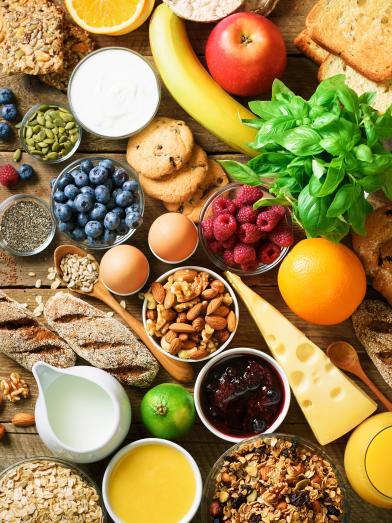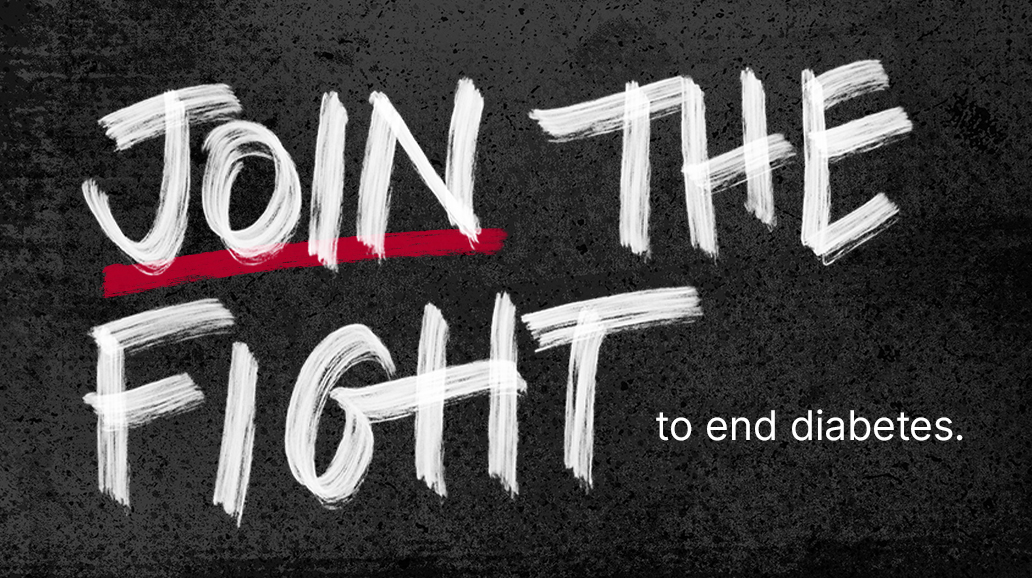Cómo entender las etiquetas de los alimentos
Intentar averiguar la información nutricional de las etiquetas y los envases no es fácil. La buena noticia es que podemos ayudar. ¡Estas etiquetas de alimentos son especialmente útiles si utiliza el conteo de carbohidratos para planificar sus comidas!
Si se confunde con las afirmaciones sobre el contenido de los alimentos, no está solo. Sin grasa, bajo en grasa o reducido en grasa. Bajo en colesterol o colesterol reducido. Es confuso y puede resultar difícil cuando intenta tomar las decisiones correctas.
Tamaño de la porción
Comience por observar el tamaño de la porción. Toda la información que aparece en la etiqueta se basa en el tamaño de la porción indicada. Si come más, significa que estará consumiendo más calorías, carbohidratos, etc. de lo que se indica.
Cantidad por ración
La información que aparece en el lado izquierdo de la etiqueta indica la cantidad total de diferentes nutrientes en una porción del alimento. Utilice estos números para comparar las etiquetas de alimentos similares.
Calorias
Las calorías son una unidad de energía: piense en ellas como la energía que su cuerpo consume y utiliza para las funciones corporales. ¿Quiere saber cuántas calorías necesita? Hable con un nutricionista dietista registrado (RD/RDN).
Carbohidratos totales
Los carbohidratos totales que se indican en la etiqueta incluyen los tres tipos de carbohidratos: azúcar, almidón y fibra. Es importante utilizar los gramos totales al contar los carbohidratos o elegir qué alimentos incluir. Debajo de los carbohidratos totales, encontrará un desglose de los tipos de carbohidratos que contiene el alimento. Obtenga más información sobre los carbohidratos.
Azúcar añadido
Uno de los tres tipos de carbohidratos presentes en los alimentos es el azúcar. A partir de enero de 2021, las etiquetas deben incluir el azúcar añadido para ayudarte a saber la diferencia entre el azúcar que se produce de forma natural en los alimentos (como el yogur o la fruta) y el azúcar que se añadió durante el procesamiento (como en las galletas, los caramelos y los refrescos). Muchas etiquetas ya han realizado el cambio. Obtén más información sobre el azúcar y los tres tipos principales de carbohidratos .
Fibra
La fibra es la parte de los alimentos vegetales que no se digiere (o, en el caso de algunos tipos, solo se digiere parcialmente). Las legumbres secas, como las alubias rojas o pintas, las frutas, las verduras y los cereales integrales son buenas fuentes de fibra. La cantidad de fibra que necesitas depende de tu edad y sexo. Los adultos sanos necesitan entre 25 y 38 gramos de fibra al día en promedio; puedes encontrar recomendaciones para tu grupo de edad y sexo en las Guías alimentarias para los estadounidenses (DGA). Obtén más información sobre la fibra y los tres tipos principales de carbohidratos .
Alcoholes de azúcar
Los alcoholes de azúcar son un tipo de sustituto del azúcar que tiene menos calorías por gramo que los azúcares y los almidones. El sorbitol, el xilitol y el manitol son ejemplos de alcoholes de azúcar. Si un alimento contiene alcoholes de azúcar, se indicará en la etiqueta bajo Carbohidratos totales. Es importante tener en cuenta que los alimentos que contienen alcoholes de azúcar no son necesariamente bajos en carbohidratos o calorías. Y el hecho de que un paquete diga "sin azúcar" en el exterior no significa que no tenga calorías ni carbohidratos. Siempre revise la etiqueta para ver los gramos de carbohidratos totales y calorías.
Grasas
La grasa total indica cuánta grasa hay en una porción del alimento. En general, cuando se trata de grasas, trate de reemplazar los alimentos con alto contenido de grasas saturadas o grasas trans por alimentos ricos en grasas monoinsaturadas y poliinsaturadas para reducir el riesgo de enfermedades cardíacas. Obtenga más información sobre las grasas .
Sodio
El sodio es el término científico para la sal. No afecta el nivel de azúcar en sangre. Sin embargo, el exceso de sodio en la dieta aumenta el riesgo de hipertensión arterial y enfermedades cardíacas. En algunos alimentos, se puede notar lo salados que son, como en los encurtidos o el tocino. Pero también hay sal oculta en muchos alimentos, como los aderezos para ensaladas, los fiambres, las sopas enlatadas y otros alimentos envasados. Leer las etiquetas puede ayudarle a encontrar estas fuentes ocultas y comparar el sodio en diferentes alimentos. Independientemente de si tiene diabetes o no, la recomendación general es consumir 2300 miligramos (mg) o menos al día. Si tiene presión arterial alta, hable con su equipo de atención médica para averiguar cuál es el mejor objetivo para usted.
Lista de ingredientes
Las listas de ingredientes pueden ser una herramienta útil. Los ingredientes se enumeran en orden de peso, siendo el primer ingrediente el que tiene la mayor cantidad en el alimento. Conocer los ingredientes es útil para tomar decisiones saludables, como aumentar la fibra (busque palabras como grano integral, trigo integral, etc.) o disminuir el azúcar (busque palabras como azúcar de caña, agave, jarabe de arce, miel, etc.).
Porcentaje de valores diarios (%VD)
Los valores porcentuales diarios de cada nutriente se encuentran en la columna derecha de la etiqueta. Estos valores indican qué porcentaje de cada nutriente aporta el alimento si se sigue una dieta de 2000 calorías por día. Como regla general, se recomienda consumir menos del 5 % de los nutrientes que se desean limitar, como el sodio y las grasas saturadas. Se recomienda consumir un 20 % o más de los nutrientes que se desean consumir en mayor cantidad, como la fibra, la vitamina D, el calcio y el hierro.
Significado de “carbohidratos netos” y otras declaraciones nutricionales
Probablemente hayas visto el término "carbohidratos netos" en algunos paquetes de alimentos. Muchas empresas de alimentos hacen afirmaciones sobre la cantidad de carbohidratos que contienen sus productos. Sin embargo, la FDA no ha definido legalmente el término "carbohidratos netos" y la Asociación Estadounidense de Diabetes no lo utiliza. Siempre mira primero los carbohidratos totales en la etiqueta de información nutricional. Controlar tu nivel de azúcar en sangre puede ayudarte a determinar cómo te afectan los carbohidratos específicos.
Los carbohidratos netos no son la única afirmación nutricional confusa que encontrará en los envases de alimentos. Por ejemplo, ¿se ha preguntado alguna vez cuál es la diferencia entre "sin grasa", "sin grasas saturadas", "bajo en grasas" y "reducido en grasas"? El gobierno ha definido algunas afirmaciones que se pueden utilizar en los envases de alimentos. Esto es lo que significan:
Calorias
- Sin calorías: menos de 5 calorías por porción.
- Bajo en calorías: 40 calorías o menos por porción.
Grasas totales, saturadas y trans
- Sin grasa: menos de 0,5 gramos de grasa
- Libre de grasas saturadas: menos de 0,5 gramos de grasas saturadas
- Libre de grasas trans: menos de 0,5 gramos de grasas trans
- Bajo en grasas: 3 gramos o menos de grasa total
- Grasas saturadas bajas: 1 gramo o menos de grasas saturadas
- Grasa reducida o menos grasa: al menos un 25% menos de grasa que la versión normal
Sodio
- Sin sodio o sin sal: menos de 5 mg de sodio por porción
- Muy bajo contenido de sodio: 35 mg de sodio o menos
- Bajo contenido de sodio: 140 mg de sodio o menos
- Sodio reducido o menos sodio: al menos un 25% menos de sodio que la versión normal
Colesterol
- Sin colesterol: menos de 2 mg por porción
- Colesterol bajo: 20 mg o menos
- Colesterol reducido o menos colesterol: al menos un 25% menos de colesterol que la versión normal
Azúcar
- Sin azúcar: menos de 0,5 gramos de azúcar por porción.
- Azúcar reducido: al menos un 25% menos de azúcar por porción que la versión normal
- Sin azúcar añadido o sin azúcares añadidos: no se añade ningún azúcar ni ingrediente que contenga azúcar durante el procesamiento.
Fibra
- Alto contenido de fibra: 5 gramos o más de fibra por porción.
- Buena fuente de fibra: 2,5 a 4,9 gramos de fibra por porción.






